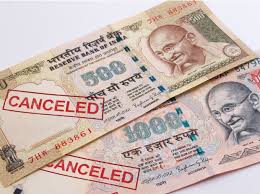Blog Details
23rd December 2016: Demonetization has been one of this era's most contentious exercises and will remain one of the most significant monetary occasions of our time. Its effect is being felt by every Indian as this step influences the economy’s liquidity. Its impact will be in light of the fact that about 86% of cash available for use was suddenly declared useless with only a few hours’ notices. Subsequently, after the withdrawal of the Rs. 500 and Rs. 1000 notes, there was a crevice in the cash arrangement as the only valid currency notes were either the Rs. 100 currency note or notes of the denomination Rs. 2000.
All said and done, demonetisation seems like a liquidity stunt. It has created a circumstance where the absence of monetary forms have jammed utilization, speculation, creation, work and so forth. Only in a unique circumstance, will this practice create a development impact on the Indian economy. At the point when the intense stride to demonetise the existing 500 and 1,000-rupee notes were taken last November, a 'little burden' came through with it which was that family units now had to change these notes either at stores or exchange them at banks. The inconvenience caused due to long queues, among other things, was supplemented with the claims that honest men and women were the ones standing in queues to follow the rules of the game for the larger cause of unearthing black money.
Since the investment fund present with the bank is just the fluid money that an individual deposits, it will change into dynamic liquidity by the savers when the new cash supply occurs. It is a little ambiguous to conclude that demonetization will create enormous reserve funds in the ‘saving money framework’ during the medium term. A large portion of the investment funds are acquired by big open division banks like the SBI and they may decrease the loan fee in the short/medium term. Be that as it may, they can't tail it in the long haul.
A gander at the RBI's yearly report for 2015-16 (July 2015 to June 2016) released on August 29, 2016, reveals insight into the volume of monetary standards that it indented throughout the years, including the current financial year 2016-17. Inquisitively, the RBI had given an indent of 2,200 million bits of Rs 1,000 section for the current budgetary year (2016-17), up 15.78 per cent more than 1,900 million pieces in 2015-16.
All said and done, demonetization as a cleaning activity may deliver a few good results in the economy. While it makes life difficult for the general public that gets paid with regard to their everyday work and as general financial activities get hosed for a short duration of time, the immeasurable advantages of having the diminished volume of ‘dark cash’ might have long-haul benefits.
Apoorva Kohli is interning with Outline India.








David Angel Makel
IT ConsultantIt is a long established fact that a reader will be distracted by the readable content page looking at its layout point of using normal